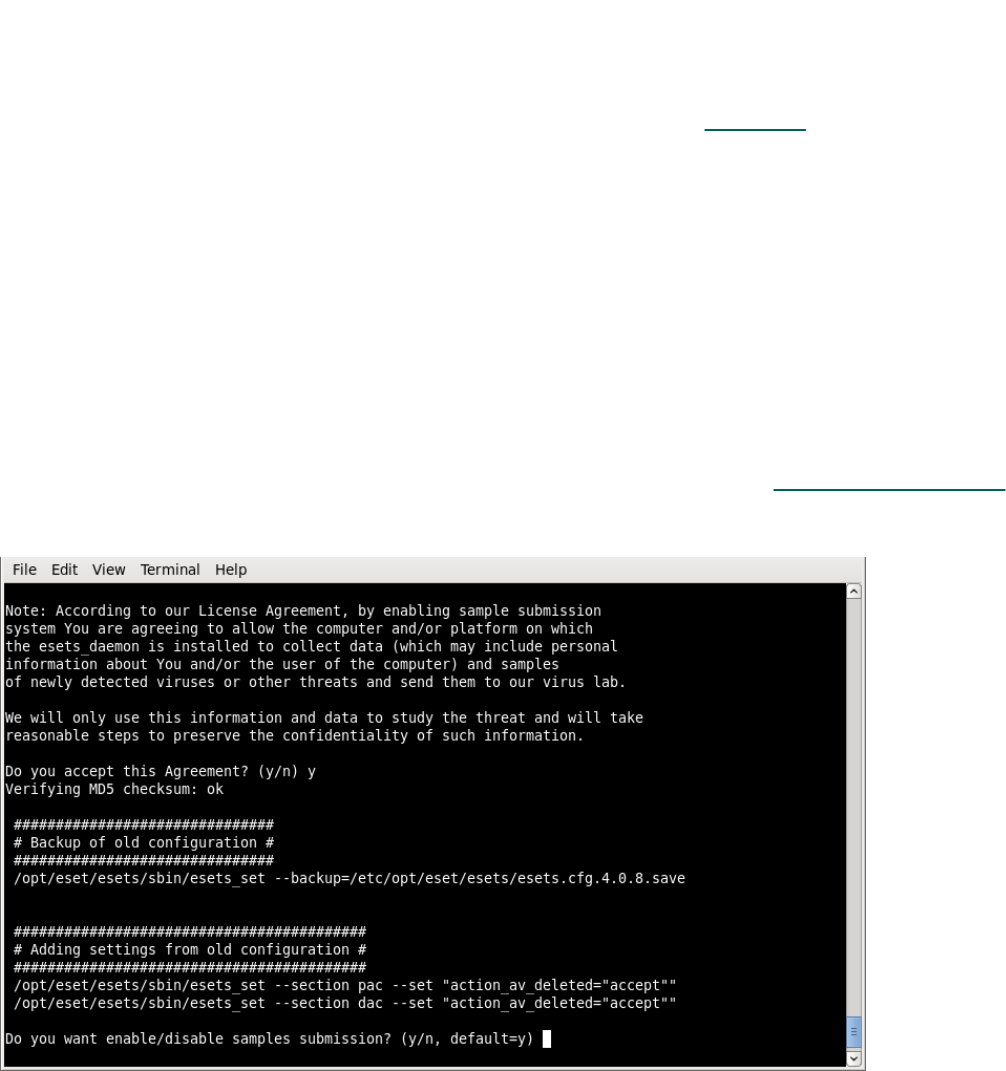Installation manual
Table Of Contents
- Introduction
- Terminology and abbreviations
- System requirements
- Installation
- Architecture Overview
- Integration with Email Messaging System
- Important ESET Mail Security mechanisms
- ESET Security system update
- Let us know
- Appendix A. ESETS setup and configuration
- Setting ESETS for MTA Postfix
- Setting ESETS for MTA Sendmail
- Setting ESETS for MTA Qmail
- Setting ESETS for MTA Exim version 3
- Setting ESETS for MTA Exim version 4
- Setting ESETS for MTA ZMailer
- Setting ESETS for MTA Novell GroupWise
- Setting ESETS for outbound email message scanning
- Setting ESETS for scanning of POP3 communication
- Setting ESETS for scanning of IMAP communication
- Appendix B. PHP License

7
4. Installation
After purchasing ESET Mail Security, you will receive your authorization data (Username, Password and license key). These
credentials identify you as an ESET customer, and are required to download updates for ESET Mail Security. The Username/
Password data is also required for downloading the initial installation package from our web site. ESET Mail Security is
distributed as a binary file:
esets.arch.ext.bin
In the binary file shown above, ‘ext’ is a Linux, BSD and Solaris OS distribution dependent suffix, i.e., ‘deb’ for Debian, ‘rpm’ for
RedHat and SuSE, ‘tgz’ for other Linux OS distributions, ‘fbs7.tgz’ for FreeBSD 7.x, ‘fbs8.tgz’ for FreeBSD 8.x, ‘nbs4.tgz’ for NetBSD
4.xx and ‘sol10.pkg.gz‘ for Solaris 10.
The ‘arch’ value represents a computer architecture, either ‘i386’ for 32-bit OS distributions or ‘amd64’, ‘x86_64’ for 64-bit.
To install or upgrade your product, run the ESET distribution script appropriate for the OS distribution and architecture that you
have:
sh ./esets.i386.deb.bin
sh ./esets.i386.fbs8.tgz.bin
sh ./esets.amd64.deb.bin
sh ./esets.x86_64.rpm.bin
Once you accept the product License Agreement, you will be prompted to enable or disable the Samples submission system
during the installation.
Figure 4-1. Installation of ESET Mail Security via Terminal.
An installation package esets-version.arch.ext will be created and placed in the current working directory. Information regarding
the installation, uninstallation or upgrade will be displayed onscreen.
To complete the installation or upgrade of your product, run the newly created esets-version.arch.ext file using the appropriate
syntax for your OS distribution:
Linux OS:
dpkg –i esets-4.0.x.i386.deb
rpm –U esets-4.0.x.i386.rpm
BSD OS:
pkg_add esets-4.0.x.i386.fbs8.tgz
Solaris:
gunzip esets-4.0.x.i386.sol10.pkg.gz
pkgadd –d esets-4.0.x.i386.sol10.pkg
Note: The procedure with an installation package esets-version.arch.ext is available only for versions 4.0.8 and below. Enabling
or disabling the Samples submission system is available from version 4.0.10.
Import the license files:
@SBINDIR@/esets_lic --import file.lic










